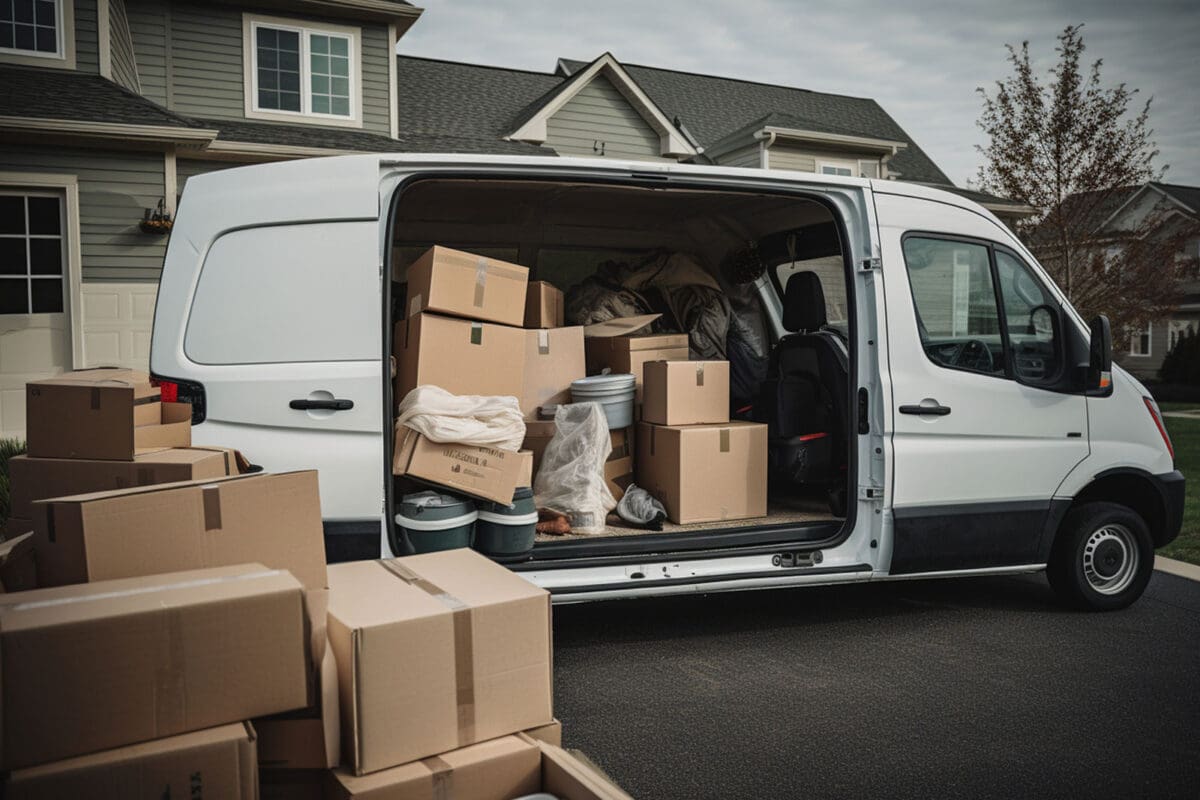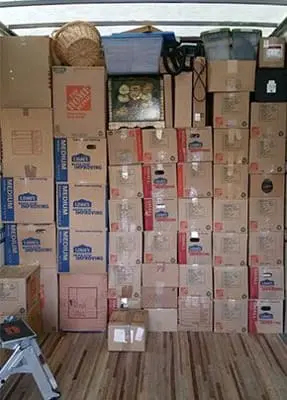Moving When You Have a Hectic Schedule
August 15, 2024 moving
Moving can be a stressful and time-consuming process, especially when you have a hectic schedule to manage on top of it all. From work commitments to family responsibilities, finding the time and energy to plan a move can seem overwhelming. However, with some careful planning and organization, you can successfully navigate a move even with a busy schedule. In this guide, we will provide step-by-step instructions on how to plan a move when you have a hectic schedule, including creating checklists, organizing your belongings, financial planning, scheduling logistics, keeping track of tasks electronically, and hiring professional help from moving companies.
Creating a Comprehensive Moving Checklist for the Week of Your Move
Kickstarting the process of a well-coordinated move requires constructing a detailed moving checklist tailored for the final week leading up to your transition. This is a crucial time when multiple tasks converge, necessitating meticulous organization to ensure a smooth operation.
Your checklist should encompass all pivotal activities, starting from coordinating the of utilities to prevent any lapses in services such as electricity, water, and internet at both your old and new residences. It’s equally important to update your forwarding address with the post office and notify relevant parties, including banks, subscription services, and insurance providers, to guarantee that your correspondence seamlessly follows you to your new home.
Additionally, your checklist should include finalizing packing strategies, ensuring that essential items are readily accessible and clearly labeled boxes are designated for immediate use upon arrival. It’s also advisable to schedule any last-minute services you might require, such as professional cleaning for your former home or specialized disposal services for items not making the move.
Remember, the effectiveness of your moving week checklist hinges on its specificity and your commitment to tackling each item systematically. This detailed approach not only aids in managing the multifaceted aspects of your move but also plays a significant role in alleviating the stress commonly associated with relocating, particularly under a tight schedule. Prioritizing tasks based on urgency and complexity ensures that you navigate this busy period with confidence and control, paving the way for a successful move.
Categorizing Your Belongings a Month in Advance
Starting the process of categorization a month before your move can dramatically streamline your packing and reduce overall stress. Begin by sorting through your possessions and deciding what to keep, donate, sell, or throw away. This early decluttering phase not only simplifies your moving day but also lightens the load, potentially reducing moving costs.
For items you decide to move, organize them based on their destination room in your new home. This strategy will facilitate quicker unpacking and organization upon arrival. For items you choose to donate or sell, consider scheduling pick-ups or drop-offs and listing items online well in advance to ensure they’re rehomed before your move date.
Remember, some belongings may hold sentimental value but might not have a place in your new home. Take this time to carefully evaluate what truly needs to come with you, possibly enlisting a friend or family member’s help to make these decisions less overwhelming.
As you categorize each item, create a detailed inventory. This list can serve as a valuable tool for tracking your belongings throughout the move and aiding in setting up your new space. By systematically categorizing your possessions well before your moving date, you can create a more organized and less chaotic moving experience, allowing you to focus your attention on other pressing tasks as your move approaches.
Financial Planning for Eating Out and Other Expenses
Navigating the financial implications of a move amidst a busy schedule requires foresight and budgetary planning. As meal preparation can become a secondary priority during the hustle of packing and transitioning, allocating a portion of your budget to cover dining out or takeaway options becomes essential. Start by estimating the number of meals you’ll need to eat out during the move week, considering both your usual dining habits and any additional helpers whose meals you might be covering.
To optimize your spending, look for eateries that offer value-for-money options, and don’t shy away from using coupons or dining deals available in your area. It’s also worth exploring meal delivery services that can offer convenience without a significant markup. Additionally, set aside a contingency fund for unexpected expenses. These can range from last-minute supply runs to hiring additional help or covering unforeseen costs related to setting up utilities or services in your new home.
Keep track of all moving-related expenditures in a dedicated spreadsheet or budgeting app, allowing you to monitor your financial outlay closely. This detailed approach to managing your finances ensures that you remain within your allocated budget, preventing financial strain during an already stressful period. By proactively addressing your dining needs and other ancillary expenses with thoughtful financial planning, you can maintain focus on the logistical aspects of your move, ensuring a smoother transition to your new home.
Organizing Your Schedule to Work Around Moving
Balancing a jam-packed schedule while preparing for a move requires meticulous planning and effective time management. It’s vital to scrutinize your calendar in advance, identifying blocks of time that can be dedicated exclusively to moving-related tasks. Weekends and evenings often provide the best opportunities to pack, declutter, and organize without the interruptions of daily work obligations.
Consider leveraging any personal days or vacation time you may have accrued to create a buffer around your moving day. Allocating a couple of days before the move to finalize packing and preparations, and a few days after to unpack and settle into your new space, can significantly reduce the pressure of trying to accomplish everything in a single day. This strategic scheduling allows for unforeseen delays or last-minute tasks, ensuring that these hiccups don’t escalate into major stressors.
Moreover, breaking down your moving tasks into manageable, scheduled chunks can prevent the process from becoming overwhelming. Designate specific times for sorting through belongings, making donation runs, or selling items you no longer need. By allocating specific times for these tasks, you’ll ensure steady progress in your moving preparations without sacrificing your work commitments or personal time.
Incorporating these strategies into your schedule not only facilitates a more organized move but also helps maintain a sense of normalcy and control during what can be a chaotic time. Through deliberate planning and time management, you can navigate the complexities of moving without compromising your professional or personal life.
Keeping an Electronic Checklist on Your Phone
In today’s digital world, leveraging technology can significantly streamline your moving process. Utilizing your smartphone or tablet, create a comprehensive electronic checklist that encompasses all your moving-related tasks. This not only includes the basics, such as packing and utility changes but also reminders for less obvious yet critical tasks like confirming moving day logistics with your chosen moving company or securing parking for the moving truck at both locations.
The beauty of an electronic checklist lies in its accessibility and flexibility. You can update your list on the go, check off completed tasks in real time, and share it with family members or roommates involved in the move. Many apps also offer the feature of setting reminders or deadlines for specific tasks, ensuring that nothing falls through the cracks in the hustle and bustle of moving.
To maximize the efficiency of your electronic checklist, categorize tasks by timeline or by room. For instance, set a category for tasks that need to be completed two weeks before the move, one week before, and on the day of the move. Similarly, organize packing tasks by room, making it easier to manage and ensuring each area of your home gets the attention it needs.
Embracing this digital approach not only keeps your moving plan at your fingertips but also introduces a level of organization that’s hard to achieve with pen and paper. With each swipe or tap, you’re one step closer to a seamless moving experience, even amidst a bustling schedule.
Hiring Professional Help from a Moving Company Like OCD Moving Services
In the midst of a bustling schedule, enlisting the services of a reputable moving company can significantly ease the burden of relocating. These experts specialize in efficiently packing, loading, transporting, and unloading your belongings, allowing you to concentrate on your daily responsibilities without the added stress of moving logistics. Prior to selecting a moving service, it’s essential to conduct thorough research to compare rates, services offered, and customer reviews. This will ensure you find a company that not only fits within your budget but also aligns with your specific moving needs. Additionally, consider discussing your schedule with the moving company to arrange the most convenient moving dates and times, ensuring minimal disruption to your routine. Opting for professional movers can transform a potentially chaotic moving experience into a manageable and organized process, granting you peace of mind and freeing up valuable time to focus on transitioning into your new home.






